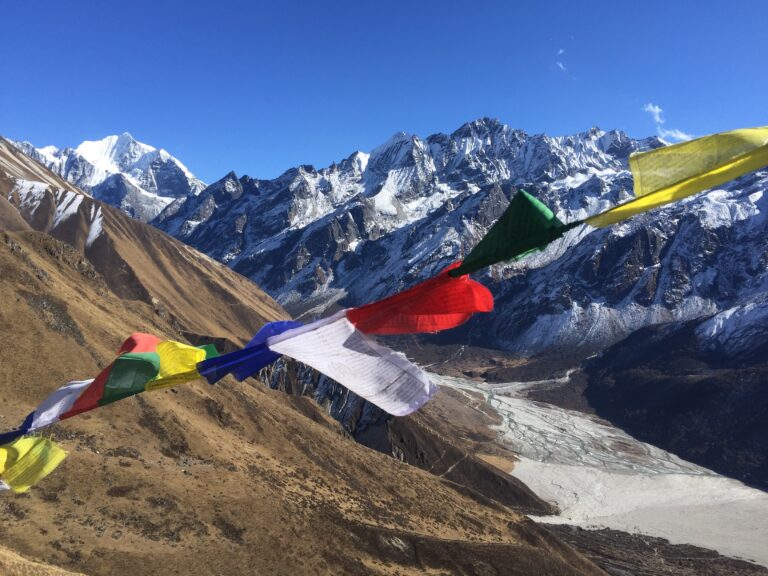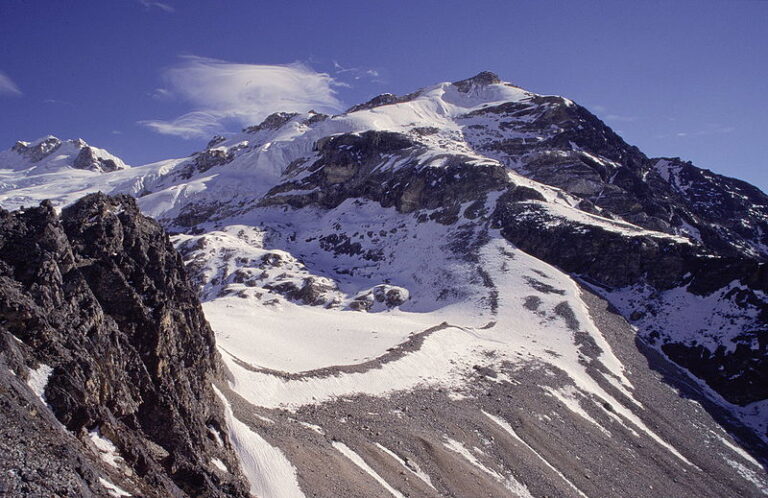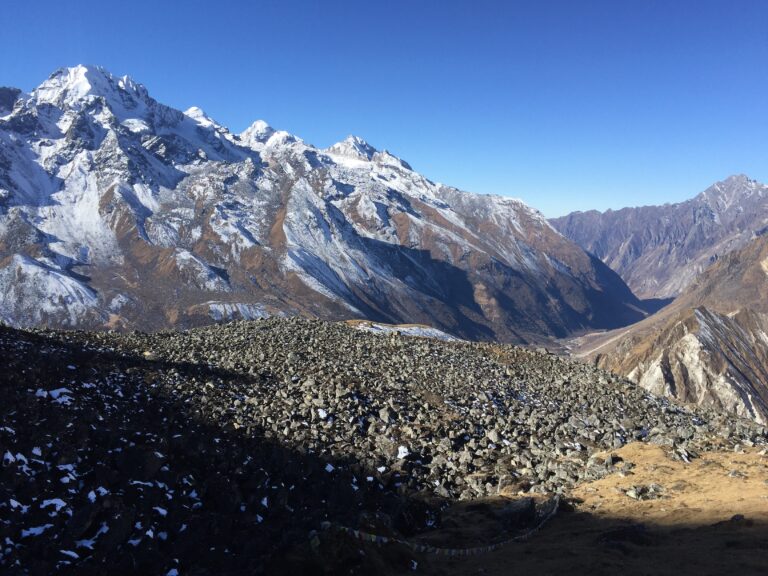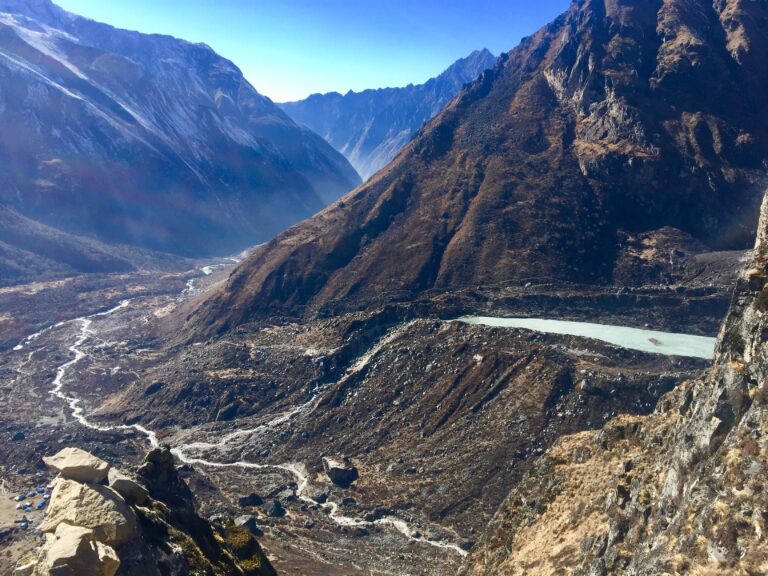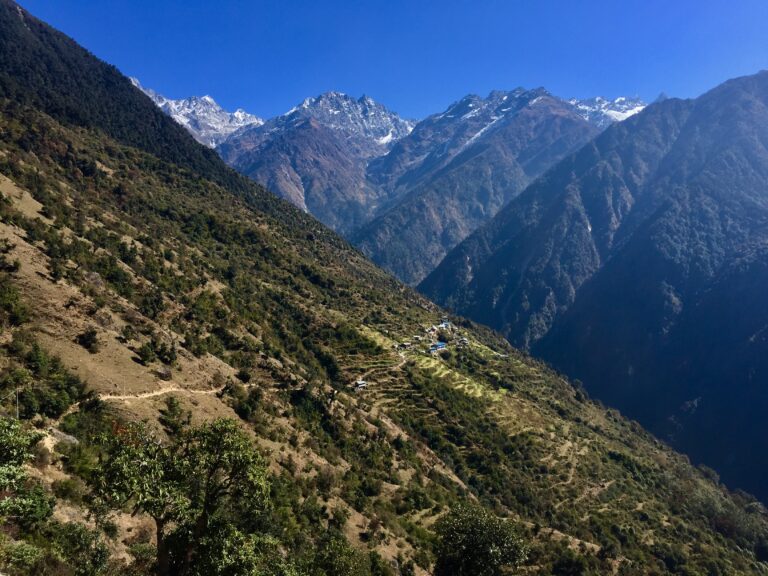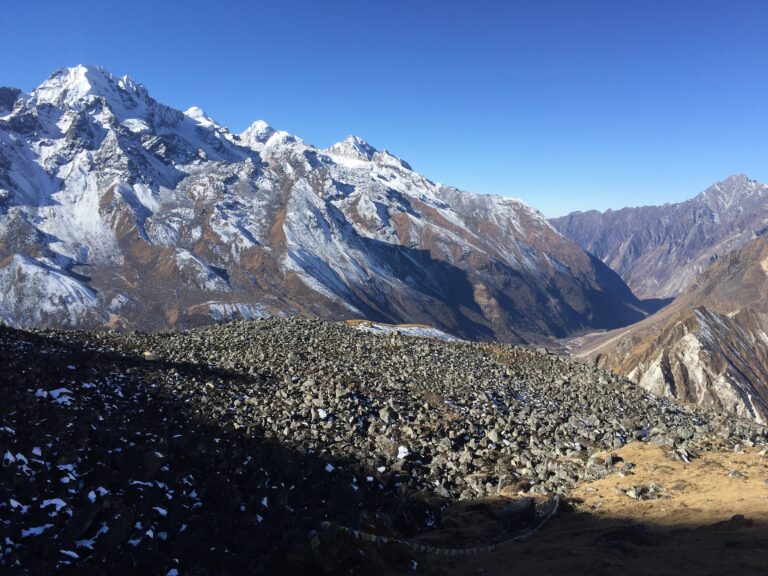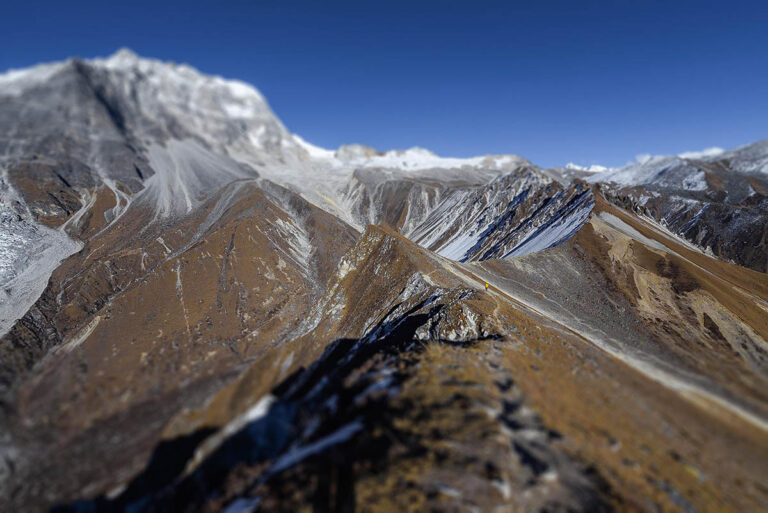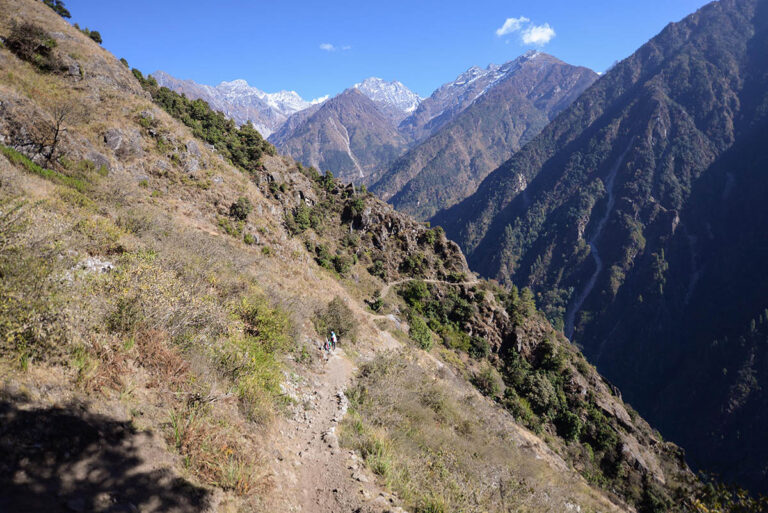Day 01 – Drive to Syabrubesi (1500m.a.s.l.) – 7 hours drive – Syabrubesi is 120 kilometers far from Kathmandu city, which is a main entrance gate for the Langtang national park. We have to drive either public bus or private jeep to get Syabrubesi that may take approximately 6 to 7 hours to depend on our transportation and the road condition. During the Driving period, we will have a beautiful terraced field, green forest, river valleys, and a stunning view of Ganesh Himal. There are dozens of guesthouses in Syabrubesi, which offers comfortable bedrooms and organic meals.
Day 02 – Trek to Sherpa Gaun (2563m.a.s.l.) – 5 hours walk – Most of the trekkers follow the main trekking trail that leads just the bank of the Langtang River but treks via Khangjim village would be pleasant walk because of more scenery and picturesque. The trail passes through the moraines and purpose to see the green forest, charm landscapes, River valleys, dozens of villages, and as well as a superb view of Ganesha Himal. Begins of the trek we will walk on the road and appear a suspension bridge and trail junction of way to Lama Hotel and Sherpa Gaun. We will turn to the left-hand side to take the upper trail to get khangjim village that may take about two hours then the rest of the trek would be pleasant due to walk on the gradual up trail to get Sherpa Gaun.
Day 03 – Trek to Ghodatabela (3030m.a.s.l.) – 6 hours walk – Early in the morning we will walk about 2 hours to get Lama Hotel village with the view of green landscape, rocky hills River valleys and moraines. The trail from Lama Hotel to Ghodatabela mostly climbs up, passes through the forest of pine, oaks, bamboo, Rhododendrons, sandalwood so possibly to see some wildlife such as deer, monkeys, mussels and Himalayan Thar. The Ghodatabela is not a settlement; there are only two basic guesthouses but still enough for around 50 trekkers and their trekking crews. From the yard of the guesthouse, we can see a breathtaking view of Langtang Lirung; which is the highest mountain of the Langtang region.
Day 04 – Trek to Langtang village (3430m.a.s.l.) – 3 hours walk – Langtang Village is not so far from Ghodatabela and trek would be very pleasant due to breathtaking view of Langtang Lirung, gigantic rocky landscapes, and wide meadows. We will walk along the Langtang River pass by two small villages called Thangsyap and Chyamki. There are hundreds of Stupas and Chortens, which are built with stone slates and carved images of Buddhist deities and Mantras. After Lunch in Langtang village, we will explore a small monastery, located just bottom of the Langtang Lirung and hike around the village that settled after the earthquake 0f 2015.
Day 05 – Trek to Kyanjing Gompa (3830m.a.s.l.) – 3 hours walk – we will head towards Kyanjing Gompa pass by two small villages called Mundu and Sindum, settled just bottom of the huge rocky hills. En route, we will see dozens of Stupas, Chhortens, Prayer wheels, Mani walls, Kani Gates, and breathtaking mountain views of Nayakang, Langshisa, Yala peak, Gangchenpo, Yubra, Tserko peak, Kinshung, and Langtang Lirung. After lunch in Kyanjing Gompa, we will climb up to Kyanjing RI that offers to see all mountain ranges of Langtang valley, wide meadows, and a beautiful sunset on the background of the White Mountains.
Day 06 – Acclimatization – After breakfast in Kyanjing village, we will hike up to a viewpoint which is 4773 meters high above the sea level, called Kyanjin-RI. The viewpoint purpose to see panoramic views of high mountains and deep valley of Kyanjing village. In the afternoon, you will do basic practice to use your climbing gear.
Day 07– Trek to Yala base camp (4684m.a.s.l.) – 6 to 7 hours walk – Begins of the trek, we will walk on the flat trail to get a small stream to the east of Kyanjing Gompa. From here, the trail gently ascends to the Yala base camp through the ridge and rocky moraines with awesome views of Naya Kang Himal, Langtang Lirung, Langtang Yubra, kyanjing Himal and other snow-capped peaks and glaciers. After 6 to 7 hours of walk from Kyanjing Gompa, we will approach to the base camp where we will set up our tent to spend one overnight.
Day 08 – Summit of Yala peak and return to Kyanjing Gompa – We will start our trek about 2 AM to the summit that may take about 5 hours. The summit commands to see panoramic views of Langtang Lirung, Dorje Lakpa, Gangshempo, Langsisha, Kinsung, Yala Peak, Nayakang, huge glaciers, glaciated lakes, and wide meadows and gigantic pasture land. After lunch in base camp, we will head towards Kyanjing village via the same trail.
Day 09 – Trek back to Riverside (2410m.a.s.l) – 6 hours walk – There is not any alternative trail get back from Langtang Valley so we have to return via the same trail until Rimche Village pass by Sindhum, Mundu, Langtang, Chyamki and Ghodatabela to get Riverside village. While heading toward Riverside, we will have an astonishing view of high mountains, green forest, waterfalls, Charms landscapes, and as well as the lush forest of Rhododendron, Sandalwood, bamboo, pine, oak and silver birch. There are only two guesthouses in Riverside so if already accompanied the rooms we have to walk down to Lama Hotel.
Day 10 – Trek down to Shyabrubesi (1500m.a.s.l.) – 6 hours walk – After breakfast, we will walk down through the forest of bamboo, pine, and oaks pass by some villages called Lama Hotel, Rimche, Bamboo and Hotspring. Along the trekking trail, we will see charm landscape, waterfalls, and wild honeycombs, which are hanging over the vertical rocky cliff. After Hotspring, we will walk just bank of the Langtang river so the trail is mostly flat to get Shyabrubesi.
Day 10 – Drive back to Kathmandu City – 7 hours drive – Kathmandu is 120 kilometers far from the Shyabrubesi and the road is an adventure in itself although, we will see a beautiful view of Ganesh Himal, agricultural terraced field and dozen of town and villages which are settled over the vertical land. The drive from Shyabrubesi to Kathmandu may take about seven hours but still, depending on the transportation.
Day 11 – Rest day in Kathmandu.
Day 12 – Final departure – After a successful trip, you will fly back to your homeland with a great experience of trekking trips, Nepalese culture, and cuisine, Tibetan traditions that make you a storyteller among your friends, family, and colleges.
